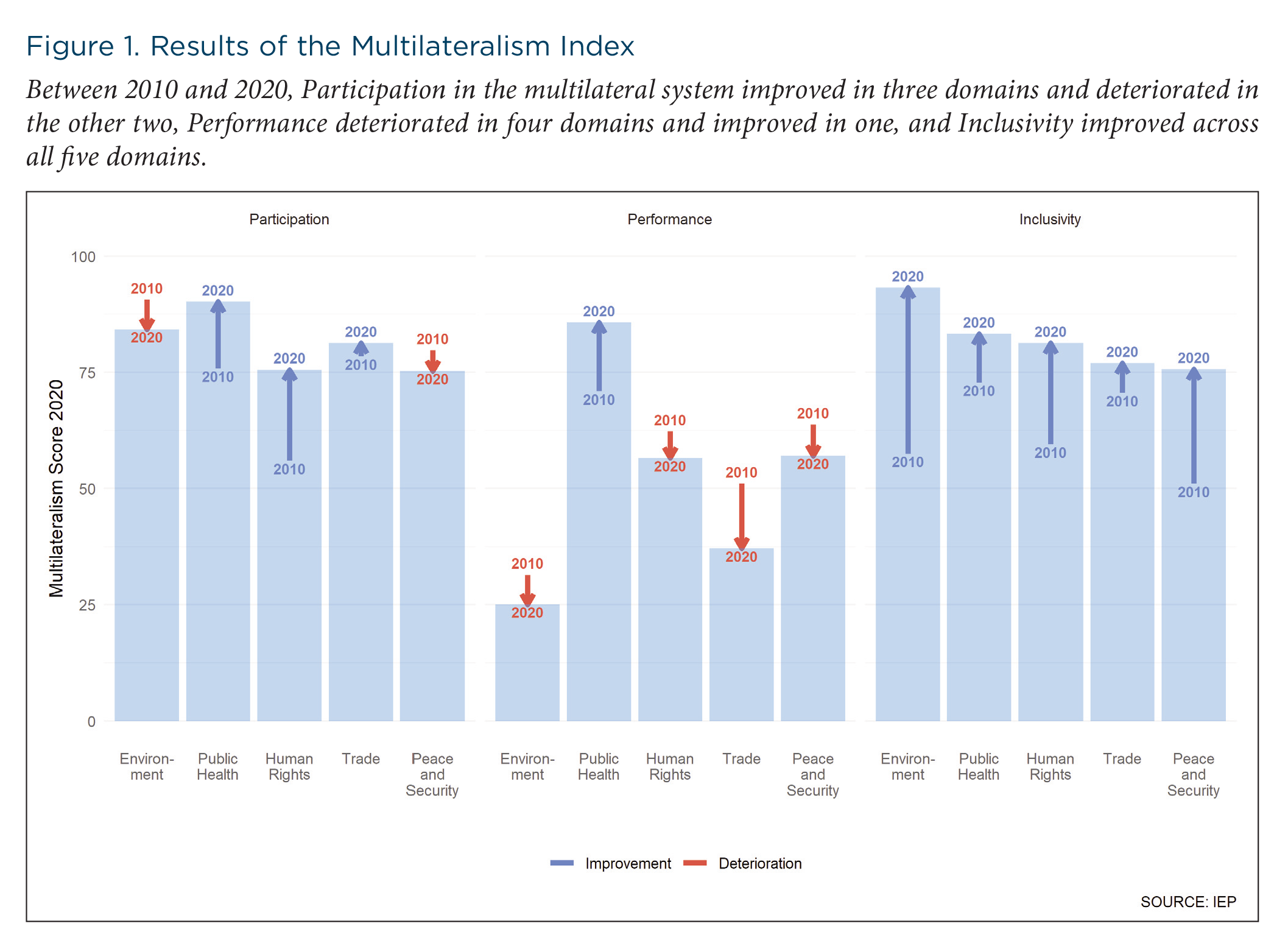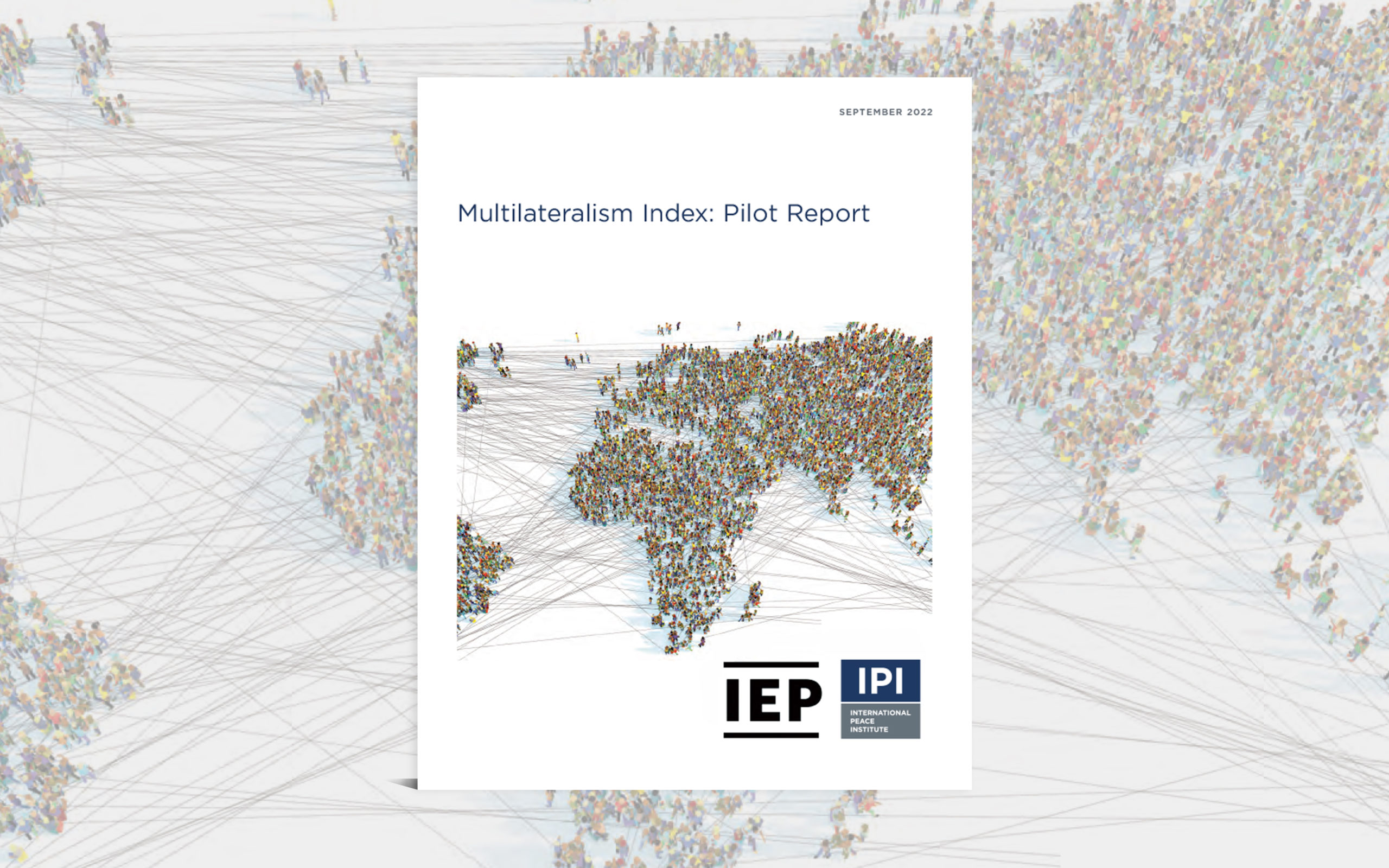Over the last few years, there has been a much-discussed rise in the challenges to multilateralism. However, there have been few efforts to quantifiably assess the state of the multilateral system. The Multilateralism Index (MI) report is the first known attempt to do so. It focuses on developments in the system over the past decade, providing a snapshot of its relative strength in 2020 compared to 2010. It aims to answer questions that include:
The project began in the context of conversations at the International Peace Institute about claims that the United Nations–based multilateral system was under siege. Between 2016 and 2019, many commentators observed a rise in unilateralist nationalism and spoke of a crisis of multilateralism, broadly defined as a decline in international cooperation, a rise in geopolitical competition, and an overall fragmenting of the international order.
Despite the many years of international challenges, the multilateral system continues to function and produce results. However, what is needed is a better understanding of where the system is strong; where it is weak, and where it is going. What are the trends over time? To help provide that understanding, IPI, in partnership with the Institute for Economics & Peace (IEP), has been developing the Multilateralism Index.
The index analyzes the multilateral system between 2010 and 2020 based on sixty-five indicators across three dimensions (Participation, Performance, and Inclusivity) and five domains (Peace and Security, Human Rights, Environment, Public Health, and Trade). Analysis reveals several trends in multilateral cooperation over the past decade:

These trends shed light on the nature of the crisis of multilateralism. Rather than decreased international cooperation and widespread exit from multilateral institutions, we are seeing a battle over the nature and purpose of the multilateral system—not decay, but transformation. The MI provides a basis for tracking this transformation and informing decision making on the future of multilateralism.
Download the Multilateralism Index Pilot Report

Watch the launch event For Good Measure: Introducing the Multilateralism Index where we discuss the key findings from the report.
Further Reading: 8 Facts about UN Peacekeeping today